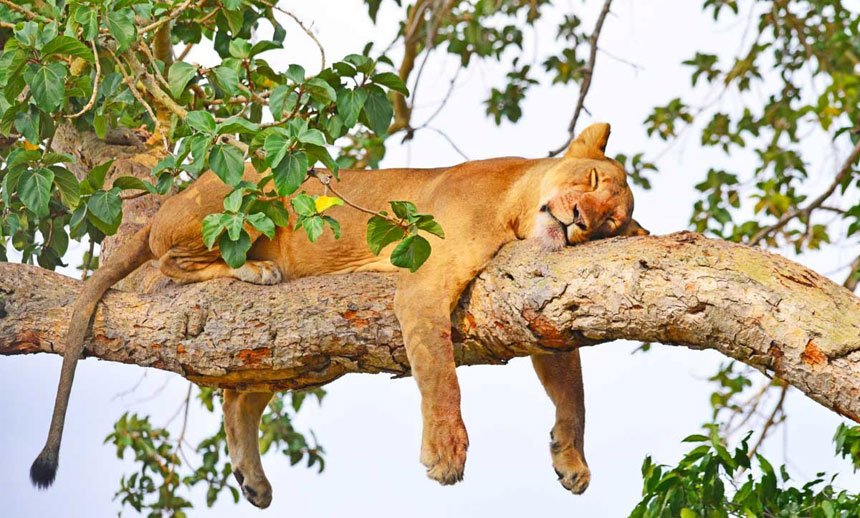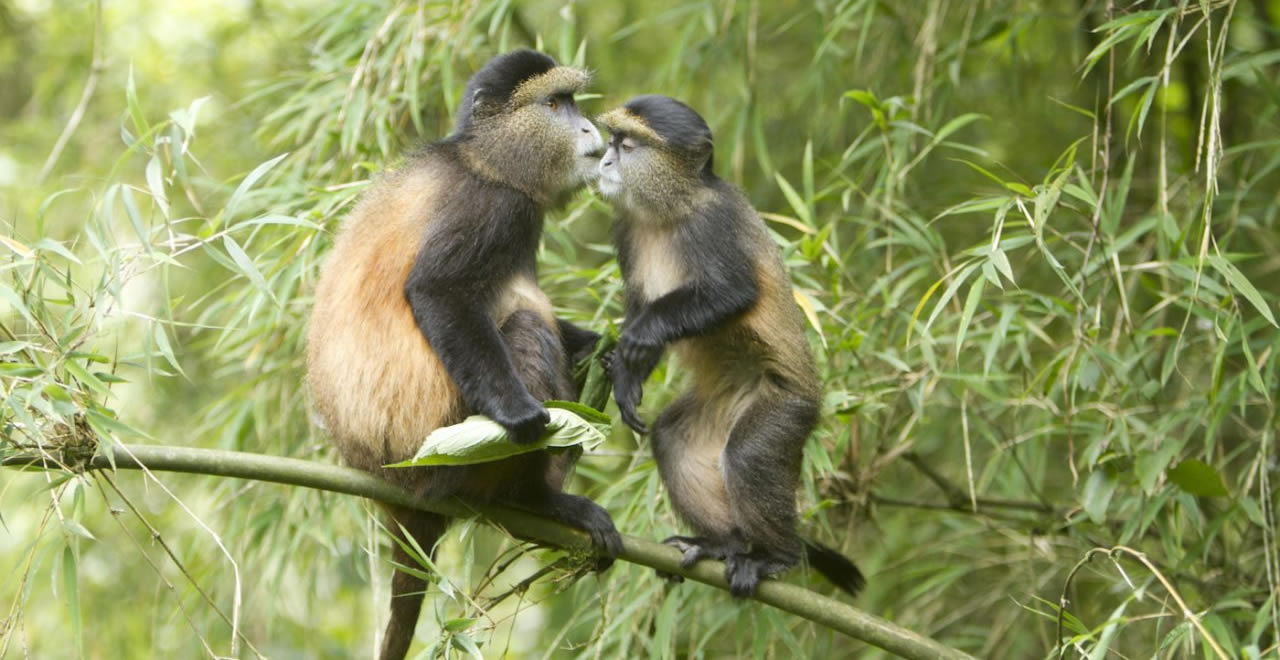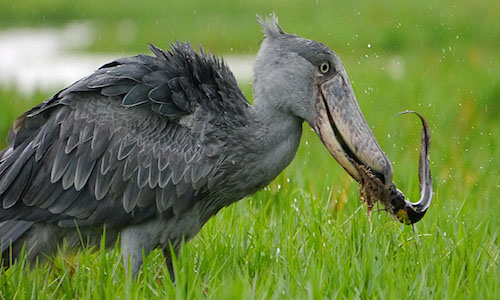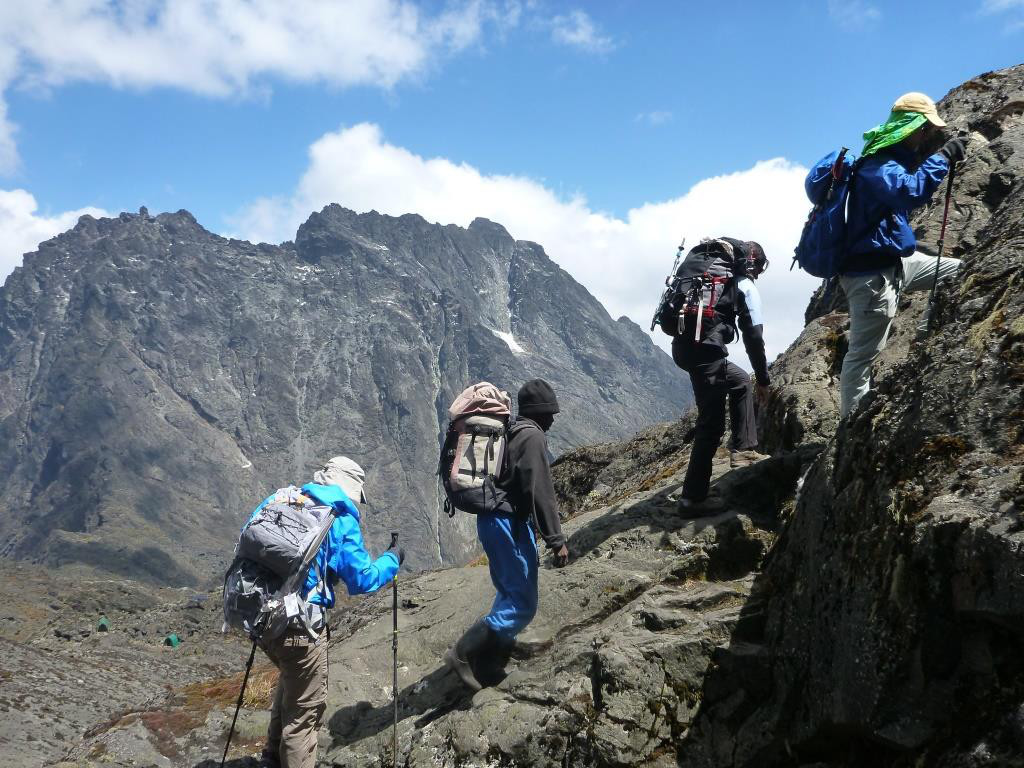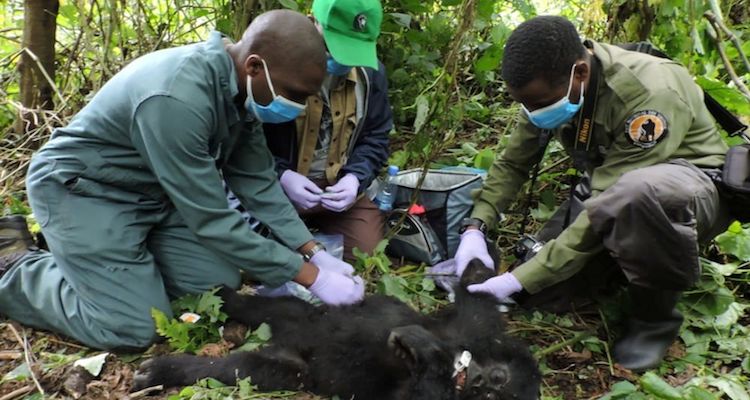
The major problems facing mountain gorillas in the wild include poaching, habitat loss and disease. However, authorities in charge of gorilla parks are working hard to boost the security of mountain gorillas through mounting regular patrols in the forests, removing snares laid by poachers and monitoring them closely for any infections. Communities around gorilla parks have also been sensitised about the importance of protecting gorillas and their habitats to control poaching and encroachment as well as empowering them to get other sources of income and food rather than bushmeat.
Is gorilla trekking worth the money?
Gorilla trekking may appear or sound costly compared to other local tourist activities but the encounter has been described as one of the best wildlife experiences in the world by many past travelers. It is so breathtaking and heartwarming at the same time to meet a wild mountain gorilla face-to-face in their natural habitat. Gorillas are popularly known as our wild cousins and being in their presence for a full hour causes endless emotions as you watch them go about their activities in a more or less human fashion. Secondly, a big part of the revenue generated from gorilla tourism is reinvested in strengthening their protection because they were regarded as critically endangered species a few years ago. Another part of the revenue is used to empower communities around gorilla habitats as a way of controlling poaching and habitat loss through human encroachment.
Bookings and payment options
To make gorilla safari bookings with Gorilla Trek Africa, contact our travel consultants through +256-705487517 or +256-776107004 or send us an email at info@gorillatrekafrica.com for detailed tour packages and travel tips.
Our payments are preferred in US Dollars and currency exchange rates vary daily based on the current international banking data available. We accept wire transfers and credit card payments
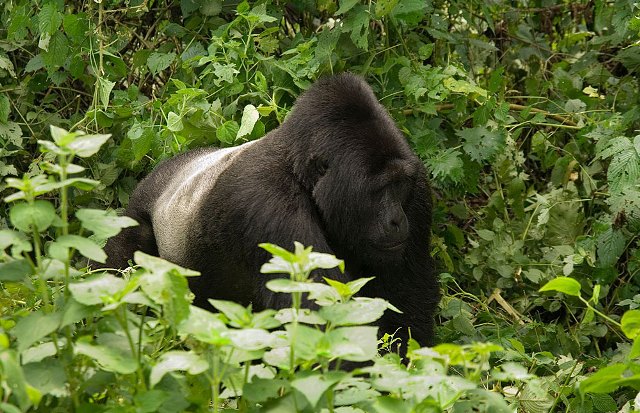
Gorillas are the largest primates in the world. Mountain gorillas are one of the biggest gorilla subspecies with their height ranging between 4 to 6 feet and weigh between 135kg and 220kg. Male gorillas are generally bigger than their female counterparts.
How do mountain gorillas behave?
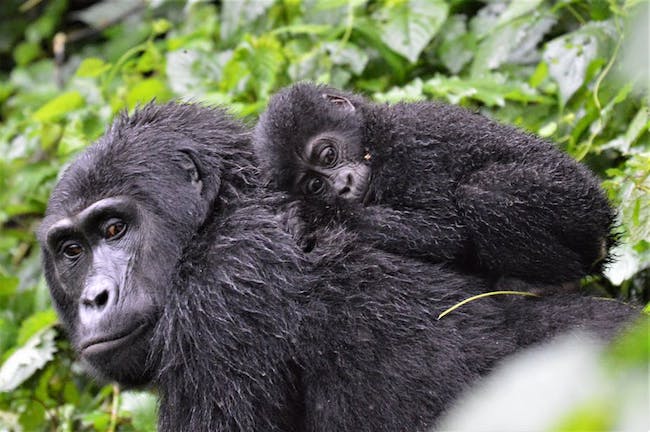
Gorillas share about 98% of the human DNA and this makes them behave more or less like humans in different ways. Some of the common traits gorillas share with humans include living in social groups or families, having a family head (silverback), vocal communication, showing emotions like happiness and sadness, constructing shelter, among others. Gorilla in groups that have been habituated are harmless to humans and they often get so close to tourists who visit them in the wild and even touch them without harming them. However, gorillas can easily charge at humans and become aggressive if they sense any form of intimidation or attack. In their daily routines, gorillas always roam around their habitat, foraging, playing and resting led by the dominant silverback. In their family set up, the leading silverback play a father’s role, while females take care of the infants within the group.
What do mountain gorillas feed on?
Plants make up over 90% of mountain gorillas’ diet. They mostly feed on bamboo shoots and stems as well as other fleshy leaves, vines, grass, roots and fruits. Gorillas have also been occasionally seen eating small invertebrates in their habitat.
What is gorilla habituation?
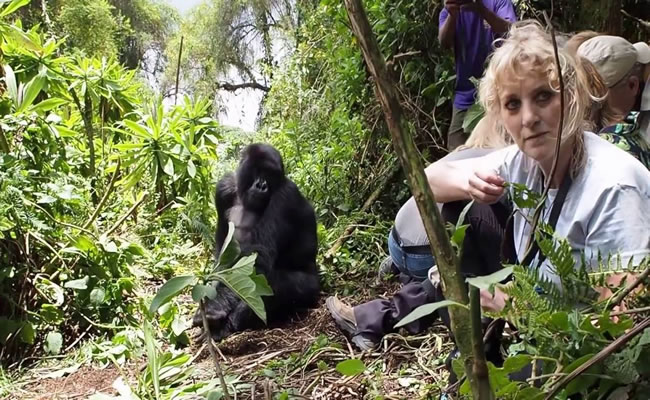
Gorilla habituation is a process undertaken by trackers to make gorillas get used to the presence of humans by visiting and following them everyday as they go about their daily routines. The process aims at improving the protection of gorillas by easing their monitoring in the wild as well as facilitating gorilla tourism by making as many gorilla groups accessible as possible. Bwindi Impenetrable National Park has the highest number of habituated gorilla groups (17), Volcanoes National Park has 10, Virunga National Park has 8 while Mgahinga Gorilla National Park has only 1. Habituated gorilla groups in each park are the ones that are visited by tourists who come for gorilla trekking safaris in any of the 3 countries. Bwindi Impenetrable National Park offers travellers a chance to take part in the gorilla habituation experience which lasts four hours per day though the cost of the activity is bigger than that of gorilla trekking, ($1,500) per person.
How to see mountain gorillas in the wild
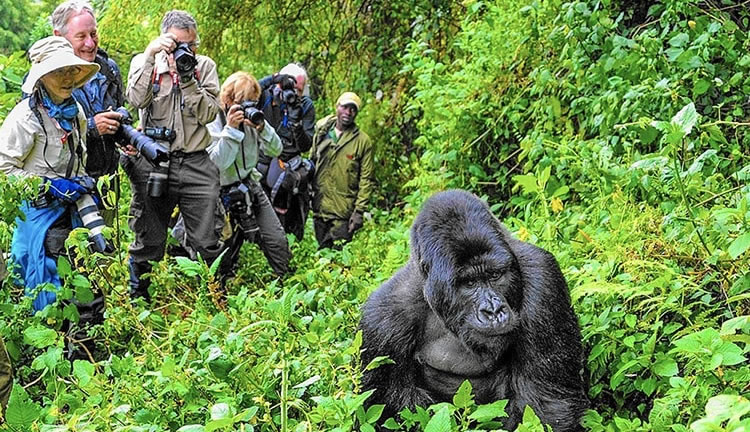
Travelers can get a chance to see mountain gorillas face-to-face in the wild by booking a gorilla safari in any of the 3 countries through a local tour agent. The cost of trekking mountain gorillas is different in each of the 3 countries due to differences in the price of the gorilla permit. Rwanda’s gorilla permit is sold at $1,500 per person, in Uganda it is sold at $700 per person while that of Congo at $450 per person. Other factors like security, transport, accommodation and travel distance also differ in each of the 3 countries with Rwanda considered to be the best followed by Uganda.
What is the best time to see mountain gorillas?
Gorilla trekking is carried out throughout the year in all the 3 countries but the best gorilla trekking experience is achieved during the dry seasons between June to September and December to February. Trekking through the thick montane rainforests is less difficult in the dry season while gorillas are also easily seen as they freely roam through their habitat unlike on rainy days where they tend to confine at one place.
What are some of the challenges facing mountain gorillas?

The major problems facing mountain gorillas in the wild include poaching, habitat loss and disease. However, authorities in charge of gorilla parks are working hard to boost the security of mountain gorillas through mounting regular patrols in the forests, removing snares laid by poachers and monitoring them closely for any infections. Communities around gorilla parks have also been sensitised about the importance of protecting gorillas and their habitats to control poaching and encroachment as well as empowering them to get other sources of income and food rather than bushmeat.
Is gorilla trekking worth the money?
Gorilla trekking may appear or sound costly compared to other local tourist activities but the encounter has been described as one of the best wildlife experiences in the world by many past travelers. It is so breathtaking and heartwarming at the same time to meet a wild mountain gorilla face-to-face in their natural habitat. Gorillas are popularly known as our wild cousins and being in their presence for a full hour causes endless emotions as you watch them go about their activities in a more or less human fashion. Secondly, a big part of the revenue generated from gorilla tourism is reinvested in strengthening their protection because they were regarded as critically endangered species a few years ago. Another part of the revenue is used to empower communities around gorilla habitats as a way of controlling poaching and habitat loss through human encroachment.
Bookings and payment options
To make gorilla safari bookings with Gorilla Trek Africa, contact our travel consultants through +256-705487517 or +256-776107004 or send us an email at info@gorillatrekafrica.com for detailed tour packages and travel tips.
Our payments are preferred in US Dollars and currency exchange rates vary daily based on the current international banking data available. We accept wire transfers and credit card payments
Mountain gorilla (Gorilla beringei beringei) is a subspecies of the eastern gorilla found in the Virunga Mountains that straddle the borders of Uganda, Rwanda, and Democratic Republic of Congo (DRC) and in Bwindi Impenetrable National Park in southwest Uganda. Mountain gorillas are listed as endangered species by the International Union for Conservation of Nature (IUCN).
Which national parks protect mountain gorillas?
There are 3 national parks within the Virunga Mountains that protect mountain gorillas. These include Virunga National Park in Congo, Volcanoes National Park in Rwanda and Mgahinga Gorilla National Park in Uganda. Bwindi Impenetrable National Park in southwest Uganda is the fourth home for mountain gorillas and the only gorilla park outside the Virunga Mountains.
How many mountain gorillas are there?
There are 1,063 mountain gorillas in the wild according to the gorilla census conducted in 2018. About half of these are found in Bwindi Impenetrable National Park while the rest live in the Virunga Mountains. The population of mountain gorillas has been increasing steadily in the past few decades thanks to the intensive conservation efforts undertaken by wildlife authorities and conservation organisations. Their population was estimated to be around 200 individuals in the wild in 1970s and they were predicted to be extinct by the end of 20th century due to rampant poaching and habitat loss.
How big are mountain gorillas?

Gorillas are the largest primates in the world. Mountain gorillas are one of the biggest gorilla subspecies with their height ranging between 4 to 6 feet and weigh between 135kg and 220kg. Male gorillas are generally bigger than their female counterparts.
How do mountain gorillas behave?

Gorillas share about 98% of the human DNA and this makes them behave more or less like humans in different ways. Some of the common traits gorillas share with humans include living in social groups or families, having a family head (silverback), vocal communication, showing emotions like happiness and sadness, constructing shelter, among others. Gorilla in groups that have been habituated are harmless to humans and they often get so close to tourists who visit them in the wild and even touch them without harming them. However, gorillas can easily charge at humans and become aggressive if they sense any form of intimidation or attack. In their daily routines, gorillas always roam around their habitat, foraging, playing and resting led by the dominant silverback. In their family set up, the leading silverback play a father’s role, while females take care of the infants within the group.
What do mountain gorillas feed on?
Plants make up over 90% of mountain gorillas’ diet. They mostly feed on bamboo shoots and stems as well as other fleshy leaves, vines, grass, roots and fruits. Gorillas have also been occasionally seen eating small invertebrates in their habitat.
What is gorilla habituation?

Gorilla habituation is a process undertaken by trackers to make gorillas get used to the presence of humans by visiting and following them everyday as they go about their daily routines. The process aims at improving the protection of gorillas by easing their monitoring in the wild as well as facilitating gorilla tourism by making as many gorilla groups accessible as possible. Bwindi Impenetrable National Park has the highest number of habituated gorilla groups (17), Volcanoes National Park has 10, Virunga National Park has 8 while Mgahinga Gorilla National Park has only 1. Habituated gorilla groups in each park are the ones that are visited by tourists who come for gorilla trekking safaris in any of the 3 countries. Bwindi Impenetrable National Park offers travellers a chance to take part in the gorilla habituation experience which lasts four hours per day though the cost of the activity is bigger than that of gorilla trekking, ($1,500) per person.
How to see mountain gorillas in the wild

Travelers can get a chance to see mountain gorillas face-to-face in the wild by booking a gorilla safari in any of the 3 countries through a local tour agent. The cost of trekking mountain gorillas is different in each of the 3 countries due to differences in the price of the gorilla permit. Rwanda’s gorilla permit is sold at $1,500 per person, in Uganda it is sold at $700 per person while that of Congo at $450 per person. Other factors like security, transport, accommodation and travel distance also differ in each of the 3 countries with Rwanda considered to be the best followed by Uganda.
What is the best time to see mountain gorillas?
Gorilla trekking is carried out throughout the year in all the 3 countries but the best gorilla trekking experience is achieved during the dry seasons between June to September and December to February. Trekking through the thick montane rainforests is less difficult in the dry season while gorillas are also easily seen as they freely roam through their habitat unlike on rainy days where they tend to confine at one place.
What are some of the challenges facing mountain gorillas?

The major problems facing mountain gorillas in the wild include poaching, habitat loss and disease. However, authorities in charge of gorilla parks are working hard to boost the security of mountain gorillas through mounting regular patrols in the forests, removing snares laid by poachers and monitoring them closely for any infections. Communities around gorilla parks have also been sensitised about the importance of protecting gorillas and their habitats to control poaching and encroachment as well as empowering them to get other sources of income and food rather than bushmeat.
Is gorilla trekking worth the money?
Gorilla trekking may appear or sound costly compared to other local tourist activities but the encounter has been described as one of the best wildlife experiences in the world by many past travelers. It is so breathtaking and heartwarming at the same time to meet a wild mountain gorilla face-to-face in their natural habitat. Gorillas are popularly known as our wild cousins and being in their presence for a full hour causes endless emotions as you watch them go about their activities in a more or less human fashion. Secondly, a big part of the revenue generated from gorilla tourism is reinvested in strengthening their protection because they were regarded as critically endangered species a few years ago. Another part of the revenue is used to empower communities around gorilla habitats as a way of controlling poaching and habitat loss through human encroachment.
Bookings and payment options
To make gorilla safari bookings with Gorilla Trek Africa, contact our travel consultants through +256-705487517 or +256-776107004 or send us an email at info@gorillatrekafrica.com for detailed tour packages and travel tips.
Our payments are preferred in US Dollars and currency exchange rates vary daily based on the current international banking data available. We accept wire transfers and credit card payments


